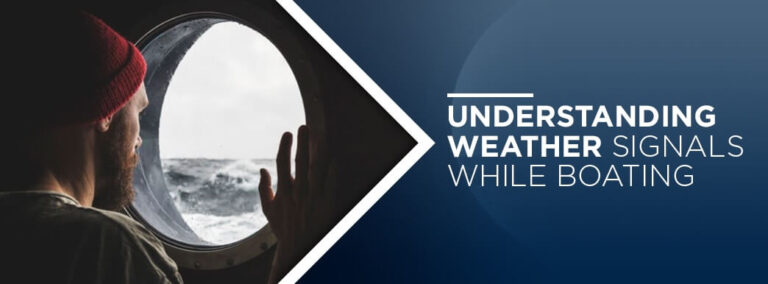Children And Sailing: Introducing Young Ones to the Sea
Children and sailing can be a wonderful way to introduce young ones to the sea. We will explore the benefits of teaching children to sail, how to get started, and important safety considerations.
Sailing provides kids with a unique opportunity to learn about navigation, teamwork, and problem-solving skills while being immersed in nature. It promotes self-confidence, independence, and a love for outdoor activities. By following safety guidelines, choosing appropriate equipment, and providing proper supervision, parents can ensure a fun and safe sailing experience for their children.
So, if you’re looking to introduce your young ones to the wonders of the sea, consider the exciting world of sailing.
Benefits Of Introducing Young Ones To The Sea
Introducing children to the sea provides numerous benefits as they learn sailing. It enhances their confidence, fosters a sense of adventure, and cultivates a love for nature. Young ones develop valuable life skills, build resilience, and create lifelong memories through this enriching experience.
Enhanced Problem-Solving Skills:
- The sea presents a unique setting where children can develop and enhance their problem-solving skills.
- Learning to navigate through different weather conditions and unexpected situations at sea helps children think critically and make quick decisions.
- They learn to assess risks and come up with solutions, fostering a proactive mindset.
Developing Teamwork And Cooperation:
- Sailing involves working as a team, making it a great activity for young ones to develop teamwork and cooperation skills.
- Children learn the importance of effective communication and coordination with their fellow sailors.
- They understand the significance of supporting and relying on each other, promoting a sense of unity and collaboration.
Building Self-Confidence And Resilience:
- Introducing young ones to the sea helps build their self-confidence and resilience.
- Sailing presents challenges that children can overcome, boosting their self-esteem.
- They learn to adapt to changing situations and bounce back from setbacks, developing resilience that will serve them well in other aspects of life.
Introducing young ones to the sea offers a range of benefits. They enhance their problem-solving skills, develop teamwork and cooperation, and build self-confidence and resilience. Sailing becomes an engaging activity that nurtures important skills while creating unforgettable experiences for children.

Credit: www.laserinternational.org
Choosing The Right Boat And Safety Equipment
Introduce your young ones to the sea by choosing the right boat and safety equipment. Ensure their safety and enjoyment on the water with the proper gear suited for their age and size.
Children And Sailing: Introducing Young Ones To The Sea
Setting sail with your children can be an exhilarating experience that creates long-lasting memories and instills a love for the sea. Ensuring the safety of your little ones is of utmost importance, as is choosing the right boat and having the necessary safety equipment.
In this section, we will explore the types of boats suitable for children and highlight the importance of safety gear and precautions.
Types Of Boats Suitable For Children
When it comes to sailing with young children, it is essential to select a boat that is safe and user-friendly. Here are some types of boats that are particularly suitable for children:
- Dinghies: These small, single-handed boats are perfect for children due to their simplicity and maneuverability.
- Optimists: Optimist dinghies, or “Optis,” are specifically designed for young sailors. They are lightweight, stable, and easy to handle, making them an excellent choice for beginners.
- Catamarans: Catamarans offer stability and can accommodate multiple crew members, making them suitable for family sailing adventures.
- Keelboats: Keelboats provide a stable platform for young sailors and are more forgiving of errors than other types of boats.
Importance Of Safety Gear And Precautions
Safety should be the top priority when it comes to sailing with children. Proper safety gear and precautions can prevent accidents and ensure a worry-free outing on the water. Here are some crucial aspects to consider:
- Life jackets: Every child on board should wear a properly fitting life jacket at all times. Ensure that the life jacket is approved by relevant authorities and meets the necessary safety standards.
- Helmets: While not commonly used in sailing, helmets can provide additional protection for children, especially in rough or unpredictable conditions.
- First aid kit: Keep a well-stocked first aid kit on board, including essential items such as bandages, antiseptic solution, and any necessary medications for your child.
- Communication devices: It is important to have reliable communication devices on board, such as a marine radio or a mobile phone, to contact emergency services if needed.
- Safety briefing: Before setting sail, go over safety procedures with your children, including how to use safety equipment, what to do in case of an emergency, and basic rules for being on the boat.
Remember, always prioritize your child’s safety while sailing. By choosing the right boat and having the necessary safety equipment, you can create a safe and enjoyable experience for your young sailors.
Essential Sailing Skills For Children
Introduce young ones to the sea with essential sailing skills for children. Help them learn the ropes and navigate the waters with confidence, creating lasting memories and a love for sailing.
Sailing is an exhilarating activity that can be enjoyed by children of all ages. Not only does it provide endless hours of fun, but it also teaches young ones valuable skills that can be carried with them throughout their lives.
To ensure a safe and enjoyable experience for children on the water, it is important to teach them the essential sailing skills. Here are some key aspects to focus on:
- Basic navigation and terminology: Introducing children to the basic concepts of navigation and understanding common sailing terms will help them become more confident on the water. Teach them the following skills:
- Points of sail: Explain the different angles at which the boat can sail relative to the wind, such as upwind, downwind, and reaching.
- Tacking and jibing: Show children how to change the direction of the boat by turning into the wind (tacking) or away from the wind (jibing).
- Sail trim: Demonstrate how adjusting the sails can affect the speed and direction of the boat.
- Right of way rules: Teach children the rules of the water, such as giving way to larger vessels and understanding the right of way rules.
- Understanding wind and weather conditions: A crucial skill for any sailor is the ability to read wind and weather conditions. Teach children the following:
- Wind direction and strength: Help children identify wind direction by looking at flags, trees, and the ripple on the water’s surface. Explain how the wind’s strength can affect the boat’s movement.
- Weather patterns: Introduce children to basic weather patterns and how they can impact sailing. Teach them to watch for indicators of changing weather conditions, such as darkening clouds or shifting winds.
- Safety precautions: Emphasize the importance of wearing appropriate clothing for the weather and being aware of potential hazards on the water.
By focusing on these essential sailing skills, children can develop a strong foundation for their future adventures on the water. Remember to prioritize safety and provide constant supervision while teaching them these skills. With practice and guidance, children can become confident and skilled sailors, fostering a lifelong passion for the sea.
Supervision And Child-Friendly Accommodations
Introduce your young ones to the sea with child-friendly accommodations and supervision. Sail away with peace of mind, knowing that your children are safe and well-looked after as they embark on a memorable maritime adventure. Relax and enjoy the experience while creating lifelong memories for your little sailors.
When it comes to introducing young ones to the joyous experience of sailing, adult supervision and child-friendly accommodations are of paramount importance. Ensuring the safety and comfort of children is crucial in creating memorable and positive experiences on the sea.
Here’s a guide to help you with the necessary guidelines and accommodations:
Adult Supervision Guidelines
Proper adult supervision is vital to keep children safe and secure while sailing. Here are some important guidelines:
- Maintain a vigilant eye on children at all times: Safety should be the top priority, and constantly monitoring children ensures accidents are prevented.
- Assign designated responsible adults: Designate one or more responsible adults who are solely responsible for supervising the children. This allows for focused attention and quicker response times in case of emergencies.
- Familiarize children with safety procedures: Teach children about basic safety procedures, such as wearing life jackets, how to move around the boat safely, and what to do in case of an emergency. This knowledge will empower them and enhance their safety awareness.
- Establish clear boundaries: Set clear boundaries for children on the boat and explain to them areas that are off-limits or potentially dangerous. This helps prevent accidents and keeps children within a safe environment.
Creating A Safe And Comfortable Environment
Apart from proper supervision, it’s crucial to create a safe and comfortable environment for children. Here’s how:
- Child-size life jackets: Provide child-size life jackets that fit properly and comfortably. Ensure they are worn at all times when on the boat or near the water.
- Secure railings and netting: Install secure railings and netting on the boat to prevent falls and any possibility of children slipping through openings and into the water.
- Soft and padded areas: Make sure the boat has soft and padded areas where children can relax or play. This helps minimize the risk of injuries and provides a comfortable space for them.
- Child-friendly facilities: Choose sailboats or yachts with child-friendly facilities, such as childproof locks, rounded corners, and non-slip surfaces. This ensures a safe and convenient environment for children on board.
- Entertainment and activities: Keep children engaged and entertained during the sailing experience by providing age-appropriate activities and games. This helps to keep their focus and ensures an enjoyable time at sea.
By following these guidelines and providing child-friendly accommodations, you can introduce young ones to the wonders of sailing with confidence, knowing that their safety and comfort are well taken care of. Sailing adventures can create lifelong memories for children, inspiring their love for the sea and building their confidence in navigating new experiences.
Teaching Safe Practices And Emergency Protocols
Introduce young children to the sea by teaching them safe practices and emergency protocols while sailing. Ensure a memorable and enjoyable experience while keeping their safety a top priority.
Sailing is an exciting and adventurous activity that can be enjoyed by people of all ages, including children. However, when it comes to introducing young ones to the sea, it is crucial to prioritize their safety above all else. Teaching children about safe practices and emergency protocols is essential to ensure their well-being while sailing.
In this section, we will discuss the importance of life jackets and proper fitting, as well as the significance of demonstrating emergency procedures and drills.
Importance Of Life Jackets And Proper Fitting
Wearing a life jacket is a non-negotiable safety measure when it comes to sailing with children. It is crucial to emphasize the following points regarding life jackets:
- Life jackets should be worn at all times, regardless of the child’s swimming abilities.
- Proper fitting is vital to ensure the life jacket functions effectively in case of an emergency.
- The life jacket should fit snugly without being too tight or loose.
- Adjustable straps should be secured to prevent the life jacket from slipping off in water.
- Regularly check the condition of the life jacket for any signs of wear and tear.
Demonstrating Emergency Procedures And Drills
Preparing children for emergency situations and conducting regular drills will empower them to react calmly and effectively when faced with unexpected events. Consider the following when demonstrating emergency procedures:
- Teach children how to signal for help and communicate distress signals, such as blowing a whistle or waving arms.
- Explain the importance of staying calm during emergencies and the role it plays in taking appropriate actions.
- Familiarize children with emergency equipment and their usage, such as fire extinguishers and flares.
- Conduct practice drills for scenarios such as man overboard, capsizing, or loss of navigation controls.
- Stress the importance of listening and following instructions from the captain or crew members during emergencies.
Remember, teaching children about safe practices and emergency protocols should be a continuous process. Regularly review and reinforce these lessons to ensure their understanding and readiness when out on the sea. By prioritizing safety and instilling good habits from a young age, children can fully enjoy the wonder and joy that sailing brings.
Exploring Appropriate Destinations And Itineraries
Introduce your young ones to the wonders of the sea by exploring appropriate destinations and crafting engaging sailing itineraries catered to their interests. Inspire a love for the ocean while ensuring a fulfilling and enjoyable experience for the entire family.
Children And Sailing: Introducing Young Ones To The Sea
Embarking on a sailing adventure with your children can be an extraordinary experience that sparks their love for the sea. It’s a chance to create lasting memories and instill a deep appreciation for nature and exploration. When planning a sailing trip with young ones, it’s important to consider appropriate destinations and itineraries that cater to their needs and interests.
This will ensure a smooth and enjoyable journey for the whole family.
Family-Friendly Sailing Destinations
Finding the perfect family-friendly sailing destination is essential for a successful trip with children. Here are some destinations that offer a range of child-friendly activities and breathtaking sights:
- The Mediterranean: With its calm waters and vibrant coastal towns, the Mediterranean is a popular choice for families. Delight in exploring picturesque Greek islands, quaint Spanish fishing villages, and charming Italian coastal towns.
- The Caribbean: Known for its crystal-clear waters and sandy beaches, the Caribbean offers endless opportunities for adventure and relaxation. Sail among the stunning islands and let your children discover the wonders of snorkeling, swimming with dolphins, and building sandcastles on pristine shores.
- The Whitsundays, Australia: Located in the heart of the Great Barrier Reef, the Whitsundays is a tropical paradise that offers a variety of family-friendly sailing experiences. Marvel at the vibrant coral reefs, hike through lush rainforests, and encounter unique wildlife such as kangaroos and koalas.
Planning For Age-Appropriate Activities
Ensuring that your sailing itinerary includes activities suitable for your children’s ages is crucial in keeping them engaged and entertained throughout the journey. Here are some tips to consider:
- Young children (ages 3-6):
- Short sailing trips: Opt for shorter sailing distances to prevent restlessness and make it more manageable for young children.
- Beach picnics: Plan stops at kid-friendly beaches where your little ones can have fun playing in the sand and splashing in the shallow waters.
- Nature walks: Incorporate short nature walks or easy hikes in your itinerary, allowing your children to explore and appreciate the surrounding natural beauty.
- Older children (ages 7-12):
- Snorkeling adventures: Include snorkeling spots with clear waters and vibrant marine life to introduce your children to the wonders of the underwater world.
- Water sports: Look for destinations that offer water sports activities like kayaking, paddleboarding, or even introductory sailing lessons for older kids to enjoy.
- Island exploration: Plan visits to islands with interesting historical sites or unique cultural experiences that can captivate your children’s curiosity.
By carefully selecting family-friendly sailing destinations and planning age-appropriate activities, you can create a remarkable sailing experience for your children. Let them discover the joy of being on the open sea while fostering a lifelong love for the ocean and exploration.
Bon voyage!
Engaging Children With Interactive Learning Opportunities
Discover the joy of introducing young ones to the sea through interactive sailing experiences. Engage children with hands-on learning opportunities, fostering a love for the ocean and developing valuable skills in a fun and educational environment.
Children are naturally curious and eager to explore the world around them. When it comes to sailing, there are numerous interactive learning opportunities that can captivate their interest and provide valuable educational experiences. By engaging children in activities that combine fun and knowledge, sailing becomes a unique platform for them to learn about marine life, conservation, and develop important life skills.
Here are some ways to introduce young ones to the sea and ensure their learning journey is both enjoyable and enriching:
Teaching About Marine Life And Conservation:
- Take them on guided tours: Arrange for guided tours to marine sanctuaries or aquariums, where children can observe various marine species up close. Knowledgeable guides can share fascinating facts about different marine creatures and emphasize the importance of conserving their habitats.
- Encourage exploration through books and documentaries: Provide children with age-appropriate books and documentaries that focus on marine life and conservation. This enables them to delve deeper into the subject and learn about various underwater ecosystems, endangered species, and the significance of preserving the oceans.
- Engage in interactive games and puzzles: Online games and educational puzzles related to marine life and conservation can be a fun way to educate children. These interactive activities are designed to enhance their understanding of marine ecosystems, global warming, and the impact of pollution on sea creatures.
- Involve them in citizen science projects: Encourage children to participate in citizen science projects that focus on studying marine life and documenting its changes. This involvement not only promotes a sense of responsibility towards conservation but also provides opportunities for hands-on learning.
Engaging In Hands-On Sailing Exercises:
- Teach basic sailing skills: Start with the basics of sailing, including understanding wind direction, steering, and sail adjustment. By explaining and demonstrating these skills, children can actively engage in steering the boat and adjusting the sails, providing them with a sense of accomplishment and ownership.
- Organize mini regattas or races: Plan friendly sailing competitions among children to create a sense of camaraderie and excitement. These races can help them learn teamwork, strategy, and decision-making skills, while also fostering a healthy competitive spirit.
- Practice navigation and chart reading: Encourage children to learn the art of navigation by introducing them to nautical charts and teaching them how to plot and interpret routes. This practical exercise not only enhances their understanding of geography but also develops their problem-solving abilities.
- Conduct marine science experiments: Integrate science into sailing by organizing marine science experiments onboard. Children can collect water samples, study marine microorganisms under a microscope, and learn how different factors such as temperature and pH affect the marine ecosystem.
By providing children with engaging interactive learning opportunities, we can spark their curiosity about the sea and instill a sense of responsibility towards marine life and conservation. Through hands-on activities and educational resources, sailing can become a transformative experience for young ones, fostering a lifelong passion for both sailing and the preservation of our oceans.
Fun Activities And Games For Children
Introduce your children to the wonders of the sea through fun activities and games. Let them experience the thrill of sailing, fostering a love for the ocean at a young age.
Children And Sailing: Introducing Young Ones To The Sea
Are you looking for a fun and educational way to introduce your children to the sea? Sailing is a fantastic opportunity for children to learn about the ocean, develop new skills, and create lasting memories. In this blog post, we will explore some exciting activities and games that your little ones can enjoy while sailing.
From fishing adventures to sailor-themed crafts and storytelling, these activities are guaranteed to keep your children engaged and entertained throughout your sailing journey.
Fishing And Water Sports
- Let your children experience the thrill of fishing by teaching them the basics of casting a line, reeling in fish, and even cleaning their catch. Not only will this activity provide an opportunity for quality time, but it will also teach your children about marine life and the importance of fishing responsibly.
- Organize a friendly fishing competition among the children to add an element of excitement. Set some simple rules, such as the biggest catch wins, and let the little anglers showcase their skills while enjoying the beauty of the open sea.
- Apart from fishing, engage your children in a variety of water sports such as snorkeling, kayaking, or paddleboarding. These activities will not only keep them active but also help them explore the underwater world and appreciate the wonders of nature.
Sailor-Themed Crafts And Storytelling
- Inspire your children’s creativity by involving them in sailor-themed crafts and activities. Encourage them to make their own paper boats or create nautical-themed artwork using seashells, colored paper, and craft supplies. This hands-on approach will allow them to express their imagination and create unique keepsakes to remember their sailing adventures.
- Storytelling is another great way to engage your children during the sailing trip. Choose age-appropriate sea-themed books or tell them captivating tales of pirates, mermaids, and adventurous sailors. Let their imagination sail away as they listen to these stories while enjoying the soothing sound of the waves.
- To make the storytelling experience even more interactive, you can incorporate puppets or finger puppet shows. Encourage your children to act out their favorite characters from the story, bringing the narratives to life in a fun and engaging manner.
These fun activities and games are sure to make your children’s sailing experience memorable and enjoyable. Whether they are catching fish, creating craft masterpieces, or listening to captivating stories, they will be fully immersed in the beauty of the sea.
So, don’t miss out on the opportunity to introduce your young ones to the wonders of sailing and let their love for the ocean grow with each new adventure.
Nurturing A Love For The Sea
Introduce your children to the wonders of the sea through sailing, fostering their love for the ocean from an early age. Let them embark on a thrilling adventure, developing a deep connection with nature and marine life while creating lasting memories.
Experience the joy of watching their curiosity and fascination grow as they navigate the open waters.
Sailing is not just a recreational activity; it’s an opportunity to nurture a deep and lasting love for the sea in children. The ocean has a magical way of captivating young minds and instilling a sense of wonder and curiosity.
Whether it’s the rhythmic sound of the waves crashing against the hull or the refreshing breeze against their faces, children can find joy and adventure on the open water. Here are some ways to encourage children to connect with nature and experience the beauty of sunsets and stargazing while sailing:
Encouraging Children To Connect With Nature:
- Exploring marine life: Teach children about the fascinating world beneath the surface by pointing out different marine species and encouraging them to observe and ask questions. It’s a chance for them to learn about ecosystems, biodiversity, and the importance of conservation.
- Engaging in water activities: Let children take a dip in the ocean, swim alongside the boat, or try their hand at snorkeling. These activities not only build confidence but also allow them to understand the intrinsic connection between humans and water.
- Learning about navigation: Involve children in the sailing process by teaching them about navigation instruments, reading maps, and understanding the principles of tides and currents. This hands-on experience will pique their interest and make them feel like an integral part of the journey.
- Encouraging environmental stewardship: Instill a sense of responsibility in children by teaching them about the importance of protecting the ocean and its inhabitants. Discuss topics like plastic pollution, marine conservation, and the impact of human activities on marine ecosystems.
Experiencing The Beauty Of Sunsets And Stargazing:
- Capturing picturesque sunsets: Witnessing a breathtaking sunset while sailing is a memorable experience for children. Encourage them to capture these moments through photography or painting, fostering their artistic skills while creating lasting memories.
- Stargazing under open skies: On clear nights, sailing provides an excellent opportunity for children to stargaze away from the city lights. Teach them about constellations, planets, and the vastness of the universe, sparking their curiosity about astronomy.
- Sharing stories and legends: Make the experience even more enchanting by sharing maritime stories, myths, and legends with children. Merge imagination with reality and let them explore the folklore surrounding the sea, creating a sense of wonder and adventure.
- Encouraging reflection and mindfulness: Sailing allows children to disconnect from the digital world and immerse themselves in the beauty of nature. Encourage moments of reflection and mindfulness, where they can appreciate the tranquility of the sea and embrace the serenity it offers.
By nurturing a love for the sea in children, we are not only shaping their connection with nature but also fostering a sense of responsibility and appreciation for our precious oceans. Sailing creates lasting memories, instills valuable skills, and sparks a lifelong passion for the beauty of the sea.
So, set sail, explore, and let the wonders of the ocean captivate the hearts and minds of our young ones.
Seasickness And Motion Sickness Remedies
Introducing young children to the sea can be a wonderful experience, but it’s important to address the possibility of seasickness. There are various remedies available for motion sickness that can help make their sailing adventures more enjoyable.
Tips For Preventing And Treating Seasickness
Sea voyages can be an unforgettable experience, but for some children, the motion of the boat can lead to seasickness and motion sickness. To ensure that your little ones have a comfortable sailing adventure, it’s crucial to be prepared and know how to prevent and treat seasickness.
Here are some tips to help you along the way:
- Choose the right boat: Opt for boats with excellent stability and minimal rocking motion, such as catamarans or larger sailboats. These boats tend to provide a smoother ride, reducing the chances of seasickness.
- Keep children hydrated: Dehydration can worsen seasickness symptoms. Make sure your child drinks plenty of water before and during the journey to stay hydrated.
- Encourage fresh air: Fresh air can work wonders in alleviating seasickness. Encourage your child to spend time on deck, feel the breeze, and take in the surroundings. Opening the windows or hatches in the cabin can also aid air circulation.
- Avoid heavy meals: Heavy, greasy, and spicy foods can increase the likelihood of seasickness. Opt for light, easily digestible meals before and during the trip. It is important to keep your child’s stomach settled.
- Provide ginger-based remedies: Ginger has natural anti-nausea properties and can be beneficial in reducing seasickness symptoms. Offer ginger candies, ginger tea, or ginger ale to your child.
- Try acupressure bands: Acupressure bands are wristbands that apply pressure to specific points on the wrist, known for relieving nausea. These bands can be found at most pharmacies and are safe for children to use.
- Distract with activities: Engaging your child in distracting activities can help take their mind off seasickness. Bring along books, toys, or portable electronic devices to keep their attention away from the motion of the boat.
- Encourage looking at the horizon: Instruct your child to focus their gaze on the distant horizon, which can aid in reducing the sensation of motion and minimize seasickness symptoms.
- Consider medication options: Consult your pediatrician for suitable seasickness medications for children. Some over-the-counter options or prescription medications may be appropriate depending on your child’s age and health condition.
- Be prepared for accidents: In case seasickness strikes despite your best efforts, have a designated sick bay or bucket readily available. Accommodating their discomfort promptly will help them feel more at ease.
Remember, every child is different, and what works for one may not work for another. It may take some trial and error to find the most effective remedies for your child’s individual needs. By implementing these tips and being prepared, you can help your little ones enjoy the thrill of sailing without the troubles of motion sickness.
Dealing With Fear And Anxiety
Introduce your children to the wonders of the sea and help them conquer their fears and anxieties through sailing adventures. This unique experience promotes confidence, resilience, and a lifelong love for the ocean.
Navigating the open sea can be a thrilling and transformative experience for both children and adults alike. However, it is common for young ones to feel fear and anxiety when encountering new and uncertain situations. As parents and caregivers, it is crucial to understand their emotions and provide them with the necessary support to help them overcome their fears.
In this section, we will explore effective strategies to address fear and anxiety in children when introducing them to sailing.
Empathy And Communication Strategies:
- Put yourself in their shoes: Before diving into strategies, it is important to empathize with your child. Remember, their fears and anxieties are valid, and acknowledging their emotions will help establish trust and open communication channels.
- Encourage open dialogue: Create a safe space for your child to express their fears. Allow them to articulate their concerns and actively listen without judgment. Validating their emotions will make them feel understood and supported.
- Ask open-ended questions: Instead of assuming what your child is feeling, ask open-ended questions to encourage them to share their thoughts. Questions such as “How do you feel about sailing?” Or “What worries you the most?” Will foster communication and provide insights into their fears.
- Normalize their emotions: Reassure your child that fear and anxiety are normal emotions when facing something new. Let them know it’s okay to feel this way and that many people, including adults, experience the same emotions.
- Offer age-appropriate explanations: Provide your child with relevant information about sailing, such as how boats work, safety measures in place, and the presence of experienced sailors. Tailor the explanations to their age and ensure they understand they are in capable hands.
- Manage your own anxiety: Children often pick up on their parents’ emotions. It is essential to manage your own anxiety and display confidence and excitement about sailing. Your positive attitude will go a long way in reassuring your child.
Building Trust And Providing Reassurance:
- Start small: Begin by introducing your child to sailing through shorter trips or calm waters. Gradually increase the duration and complexity of the outings as their comfort level grows. This incremental approach will build their confidence and trust in the experience.
- Involve them in the process: Let your child actively participate in sailing activities. Teach them how to handle basic tasks, such as tying knots or adjusting sails. Being involved helps them feel empowered and in control, reducing anxiety.
- Establish a routine: Create a predictable routine during sailing trips to provide a sense of stability and familiarity for your child. This routine can include activities like snack breaks, storytelling, or engaging in games while on board.
- Celebrate achievements: Acknowledge and celebrate your child’s milestones and progress in overcoming their fears. Whether it’s successfully boarding the boat or stepping out of their comfort zone, praise their efforts and emphasize their bravery.
- Monitor and adapt: Keep a watchful eye on your child throughout the sailing experience. Pay attention to their emotional cues, and if necessary, make necessary adjustments such as shortening the trip or taking breaks to address their anxiety.
By implementing empathy and communication strategies, as well as building trust and providing reassurance, you can help alleviate your child’s fears and anxieties about sailing. Remember, patience and understanding are key in this process, allowing your young ones to embark on exciting adventures on the sea with confidence and joy.
Frequently Asked Questions For Children And Sailing: Introducing Young Ones To The Sea
What Age Should Kids Start Sailing?
Kids can start sailing at a young age, usually around 6-8 years old, depending on their maturity and physical abilities.
Why Is Sailing Good For Kids?
Sailing is good for kids because it improves coordination, builds confidence, teaches teamwork, and encourages a love for nature.
Is Sailing Fun For Kids?
Sailing is a fun activity for kids that they will enjoy and create precious memories.
What Is A Sail Boat Explanation To Kids?
A sailboat is a boat that uses the wind to move, using a large piece of fabric called a sail.
Conclusion
Sailing can be an incredible adventure for children, offering them the opportunity to connect with nature and develop a sense of resilience and independence. By introducing young ones to the sea, parents can foster their curiosity and love for the outdoors, instilling values of teamwork, perseverance, and respect for the environment.
Engaging in sailing activities allows children to learn invaluable life skills such as problem-solving, decision-making, and adaptability. Moreover, sailing provides a break from technology and encourages children to engage in physical activity, promoting their overall well-being. The excitement and thrill of being on a boat, feeling the wind in their hair, and navigating through the waters can create lasting memories for children.
They can also form lifelong friendships with fellow sailors, creating a close-knit community of maritime enthusiasts. So, set sail with your young ones and embark on an unforgettable journey that will shape their character and open their eyes to all that the sea has to offer.








